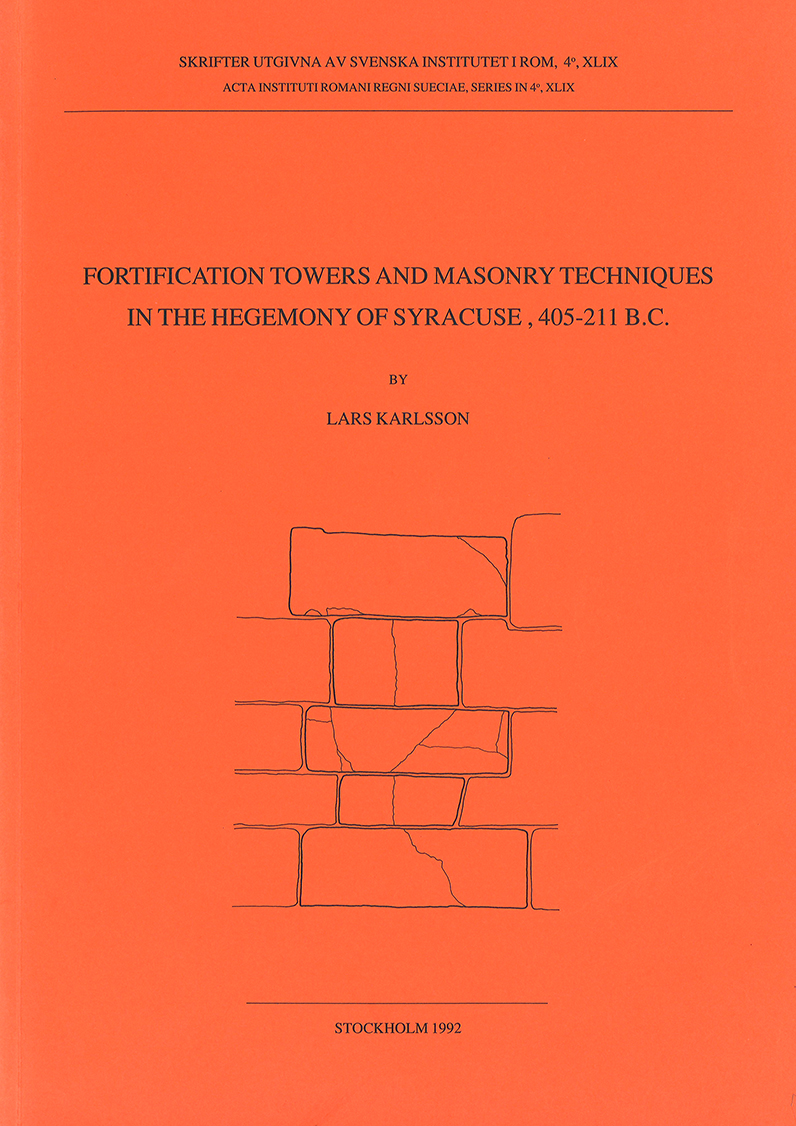Published by the Swedish Institute of Classical Studies in Rome. Distributed by Astrom Editions. Fortification towers and masonry techniques in the hegemony of Syracuse, 405–211 B.C. By Lars Karlsson Abstract Syracuse assumed the leadership of the Greek cities after the Carthaginian wars of 409–405 B.C. and the first chapter discusses the four main periods which can be discerned in the archaeological material: (1) the rule of Dionysios I, 405–367 B.C., (2) the period of Timoleon, 244–c. 316 B.C., (3) Agathokles, 316–289 B.C., and (4) the rule of King Hieron II, 270/69–215 B.C. Pyrrhos, as king of Syracuse in 278–276 B.C., was also responsible for work on Sicilian fortifications. Towers with internal crosswalls are treated in Chapter Two and they appear in two types. The first group consists of seven towers with internal walls in the shape of a T (the ‘Epipolai Towers’). The towers are large and square, measuring 10–12 m. (around 30–35 Doric ft.) on a side. The second group of towers with interior walls in the shape of a Greek cross, is common in Sicily. Twelve square examples are known (plus two circular and two semicircular). The square towers frequently measure 6.60 m. (20 Doric ft.) on a…

